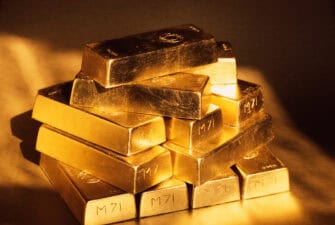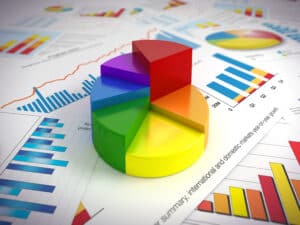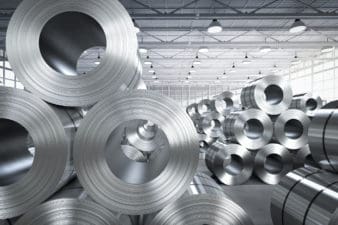A key part of Trump’s political platform is his push to make America great again and revitalise U.S. industry. He intends to do this by levying a broad range of tariffs and other restrictions on free trade across a swathe of imported products so that locally manufactured products can compete. This saw Trump impose trade tariffs against the European Union (EU) and China, slapping tariffs on EU steel and aluminum as well as on more than US$50 billion of Chinese goods.
The EU has responded in kind, imposing tariffs on a range of U.S. imports that will commence in July 2018. Beijing is also considering its own tariffs, and there is the very real risk of a trade war emerging, which has sent jitters through global financial markets and could cause global economic growth to falter. Coupled with the risk of contagion spreading across the EU and financial markets because of an Italian economic crisis, this means that now is the time for investors to bolster their exposure to gold.
Now what?
You see, the lustrous yellow metal has fallen sharply in recent weeks to be trading at US$1,259.39 per ounce at the time of writing, its lowest point since December 2017. That has created an opportunity for investors seeking to cash in on gold’s next rally and hedge against a range of risks that could have a marked impact on global growth.
One of the best ways to hedge against those dangers is by investing in Kirkland Lake Gold Ltd. (TSX:KL)(NYSE:KL). The mid-tier gold miner has an attractive portfolio of quality assets located in Australia and Canada, including the Macassa underground mine, which is ranked as the highest quality underground mine globally. Those assets give Kirkland Lake reserves of 4.6 million gold ounces with an impressive average grade of 11.1 grams of gold per ton of ore.
That high ore grade is particularly important to note, as it makes it easier and cheaper to extract the gold from the surrounding minerals. For the first quarter 2018, Kirkland Lake reported all-in sustaining costs of US$833 per gold ounce sold, which was US$40 lower than the same quarter in 2017.
That sees Kirkland Lake firing on all cylinders reporting solid financial first quarter results, including net earnings of US$52,561, which was three times higher than a year earlier. This strong performance leaves Kirkland Lake on track to achieve its 2018 guidance, where production is forecast to expand by 4%, which in an operating environment where gold has firmed will give its bottom line a solid lift.
Notably, Kirkland Lake’s production will continue to grow. The miner is investing heavily in developing its assets, including ramping up activity at its Australian Fosterville mine.
The considerable investment the company has made in that asset is already delivering solid results, illustrating the considerable potential that it holds. First quarter average ore grade mined was 16.8 g/t, which was a remarkable 51% greater than the equivalent period in 2017. That saw the mine report AISCs of a mere US$576 per ounce of gold sold, which is among some of the lowest in the industry.
Those trends at Fosterville will continue because of Kirkland Lake’s considerable investment in developing the asset. It has increased its 2018 spending on sustaining capital at the mine, which will be used to fund extensive underground development.
So what?
Kirkland Lake remains among the best means of gaining exposure to gold and hedging against the broad array of risks to global economic growth, notably the very real threat of a trade war. It’s high-quality assets and steadily growing production means that as gold rises its earnings will expand at a rapid clip, which should cause its stock to appreciate.






